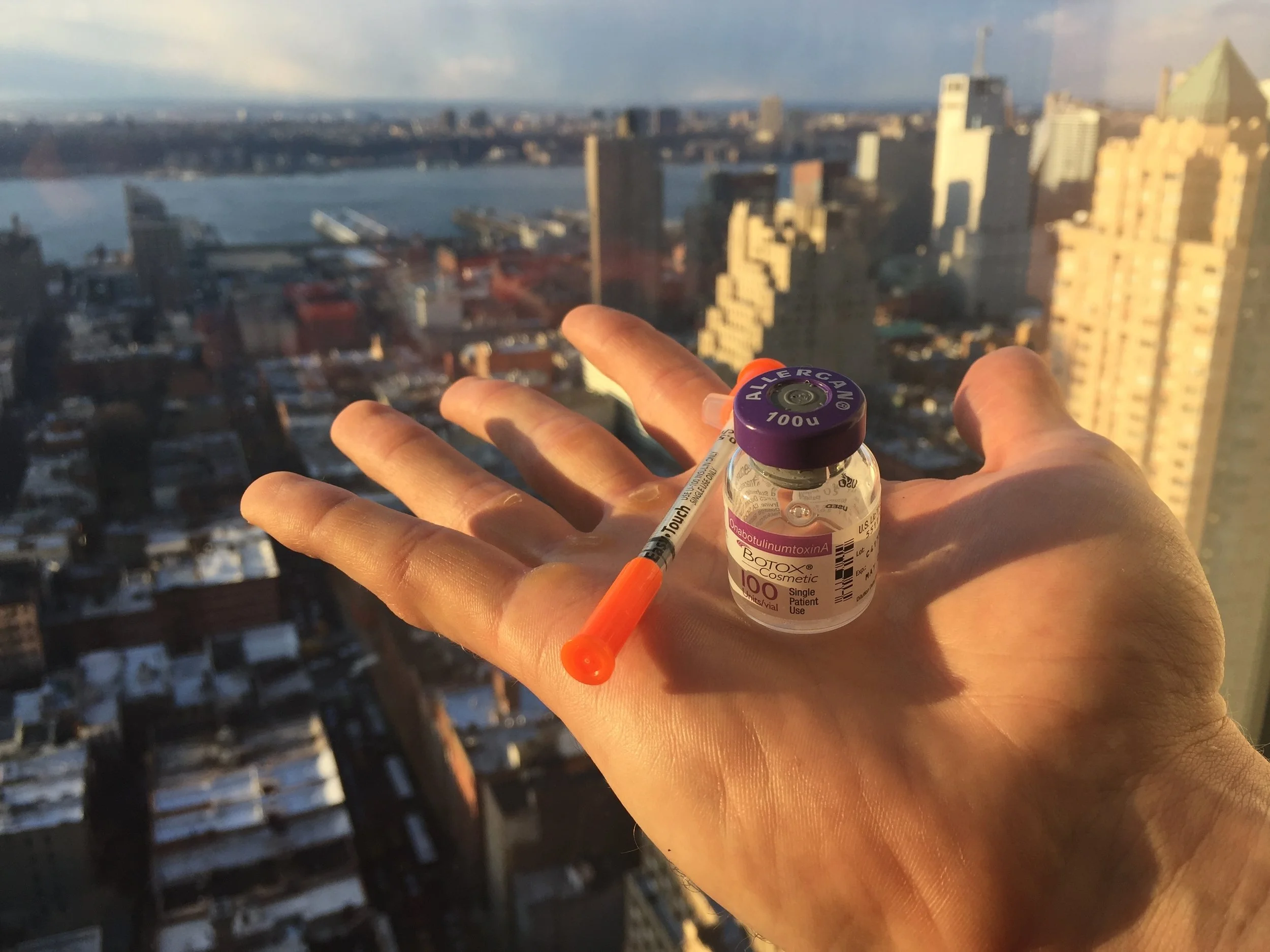Although frustrating at times, sweating is an essential function for thermoregulation: maintaining an appropriate body temperature. The hypothalamus is a region of the brain containing your internal thermometer. Two types of input influence this thermometer: the inner core temperature and the outer skin temperature. Based on these inputs, the hypothalamus will increase or decrease sweating to adjust body temperature.
What About your Furry Friend?
Covered in fur, canines lack a large surface area of sweat glands like humans. So, how does Sasha keep her cool? Dogs practice evaporative cooling, too, by panting. After playing frisbee in Sheep's Meadow, Sasha will breath rapidly from her mouth to induce evaporation of water from her oral cavity and pharynx. She will continue to pant until her body temperature returns to normal.
In the setting of excessive heat--like when you take a run up to the Cloisters or when it was hella hot during that safari in Africa--the hypothalamus sends a neural signal down the spinal cord to the sweat glands. The water released from sweat glands will evaporate into the air, thereby cooling the skin and your venous blood. This process is called evaporative cooling and will continue until the hypothalamus detects that body temperature has returned to normal.
Yet, sometimes the nervous system goes rogue.
Hyperhidrosis is sweating beyond what is physiologically necessary to maintain thermal homeostasis. About 3% of the population suffers from this medical condition, which can be socially debilitating and drastically impair quality of life. Hyperhidrosis can occur at any time and often increases under high temperatures or stressful environments.
An imbalance between the sympathetic and parasympathetic nervous systems causes hyperhidrosis. An increase in sympathetic tone results in simultaneous constriction of arteries and stimulation of sweat glands. The result is a clammy and sweaty body part.
Do you have to change into a second shirt as soon as you reach the office?
Do you ruin your blow out as soon as you start exercising?
Are you unable to wear light-colored clothing?
Do you offer the sweatiest of handshakes?
Botox can change your life.
Yes, this miracle drug has functions beyond smoothing existing wrinkles and preventing future ones. Botulinum toxin, or Botox, can outsmart your nervous system by preventing perspiration.
How? Botox inhibits release of a neurotransmitter called acetylcholine. As evolutionary biology would have it, acetylcholine has many functions within the body, two of which are stimulating muscles and sweat glands. It's the site of Botox injection that determines the effect. Injecting Botox in or near muscles prevents muscle contraction, whereas injecting Botox in or near sweat glands prevents release of sweat. Now that's a sweaty miracle.
Reducing underarm sweating is as easy as 1-2-3!
- Apply a topical numbing cream to minimize discomfort during the procedure
- Inject 50 units of Botox into each armpit, just beneath the skin
- Notice results in 2-4 days
Results typically last for 6 to 9 months.
The procedure is quick, nearly-painless and costs $1500.
Although Botox is only FDA approved for treating excessive sweating of the underarms, Botox can be injected just about anywhere you sweat excessively, with remarkable success. Popular sites of injection include the scalp, face, palms and soles. For more information about injecting Botox at these sites inquire at Services@DoctorK.nyc
Other options for treatment of axillary hyperhidrosis
- Aluminum-based anti-perspirants are the first line treatment and are successful in treating mild excessive sweating. Skin irritation and stinging are common adverse effects that can limit use.
- Oral anticholinergic drugs such as Oxybutinin and Glycopyrrolate. Remember the neurotransmitter acetylcholine? These drugs block the acetylcholine receptor which inhibits stimulation of sweat glands. However, oral therapies are not targeted like Botox and often produce unwanted side effects elsewhere in the body, such as dry mouth, dry eyes and blurry vision. Not a great option.
- Iontophoresis entails placing the hands or feet in tap water with low voltage DC electrical current. The exact mechanism of action is unknown. The initial treatment period requires 8 sessions.
- Microwave thermolysis such as miraDry uses heat technology to target and destroy sweat glands. Reported to offer long term improvement. More expensive than the aforementioned procedures and may require more than one session. Risks include localized soreness, swelling and alterations in sensation.
- Surgery to remove or destroy sweat glands. Invasive and expensive.
- Endoscopic thoracic sympathectomy is a minimally invasive technique targeting the sympathetic nervous system. Depending on how the nerve is manipulated, ETS can reversibly or irreversibly block communication between nerves and sweat glands. Many patients experience compensatory sweating from other areas of the body as a side effect. Although temporary in most cases, compensatory sweating can be permanent.

